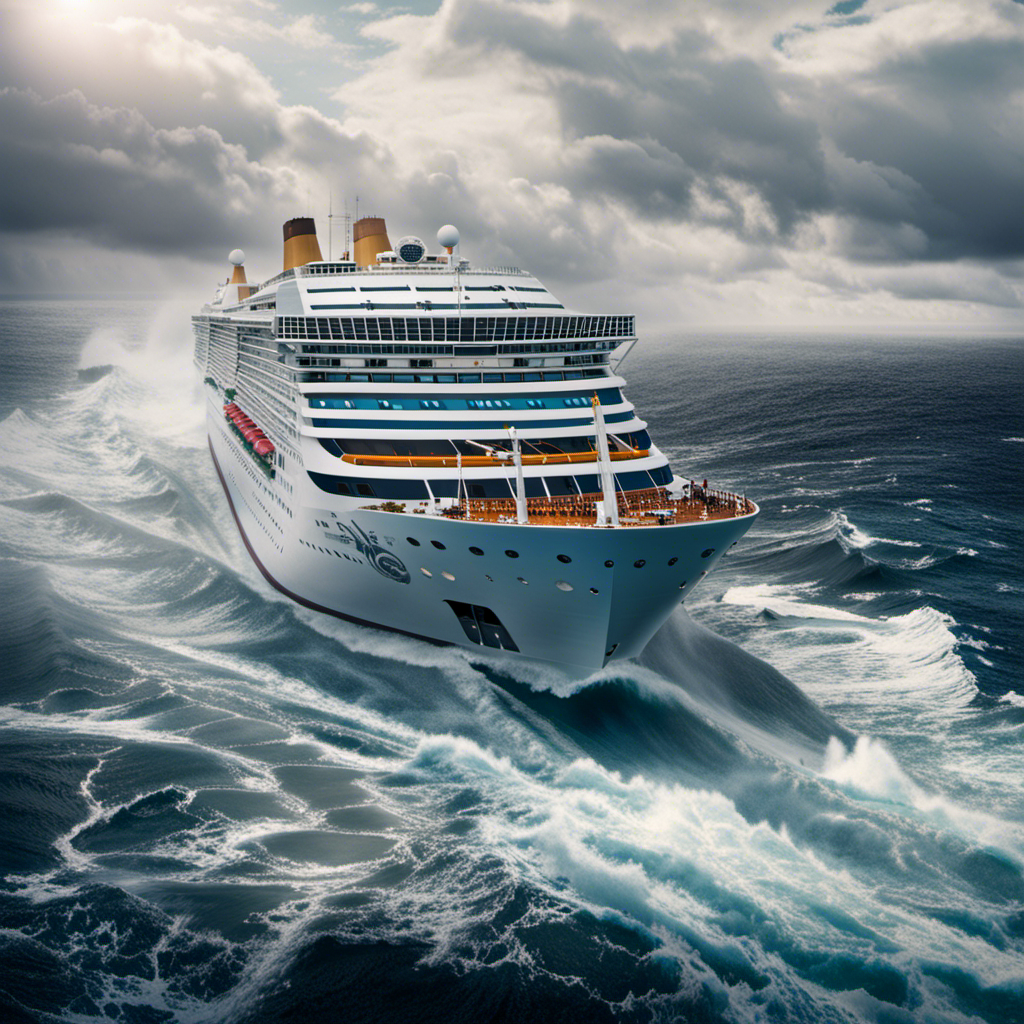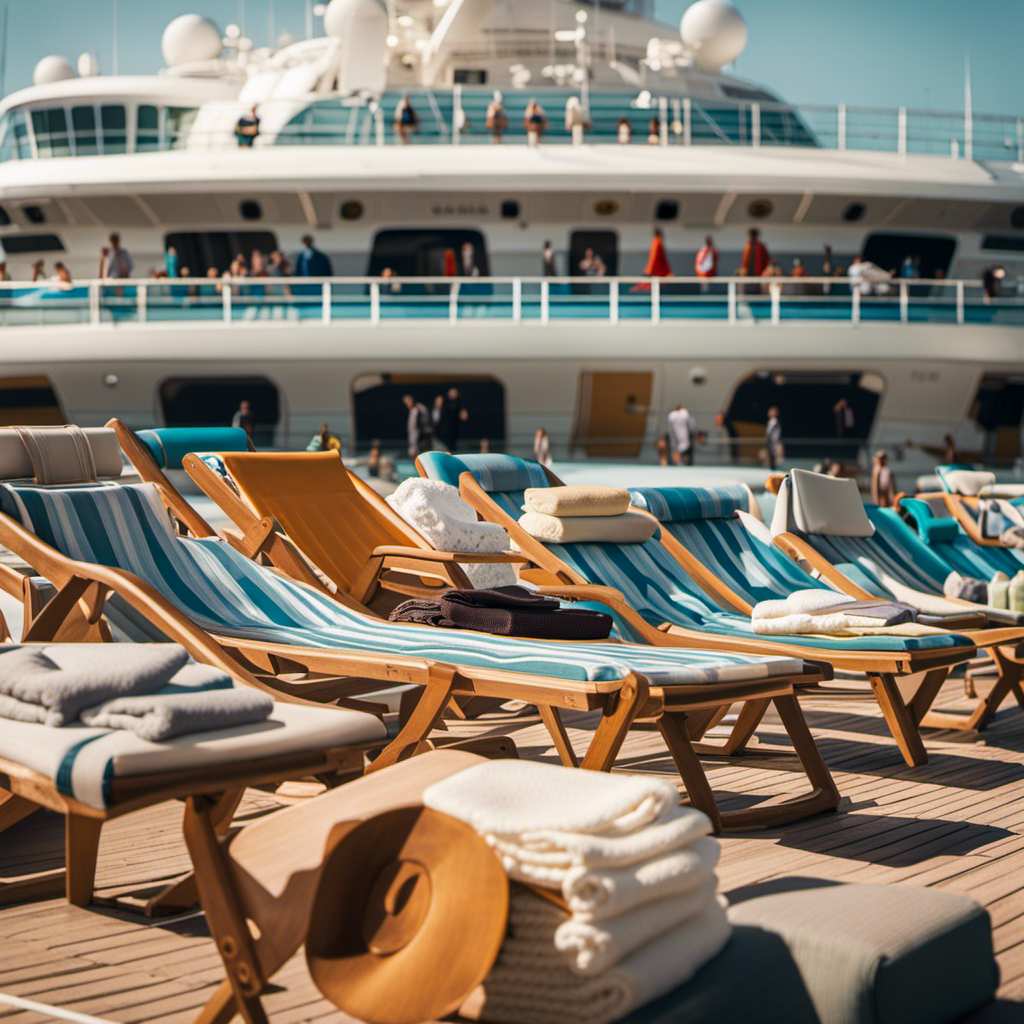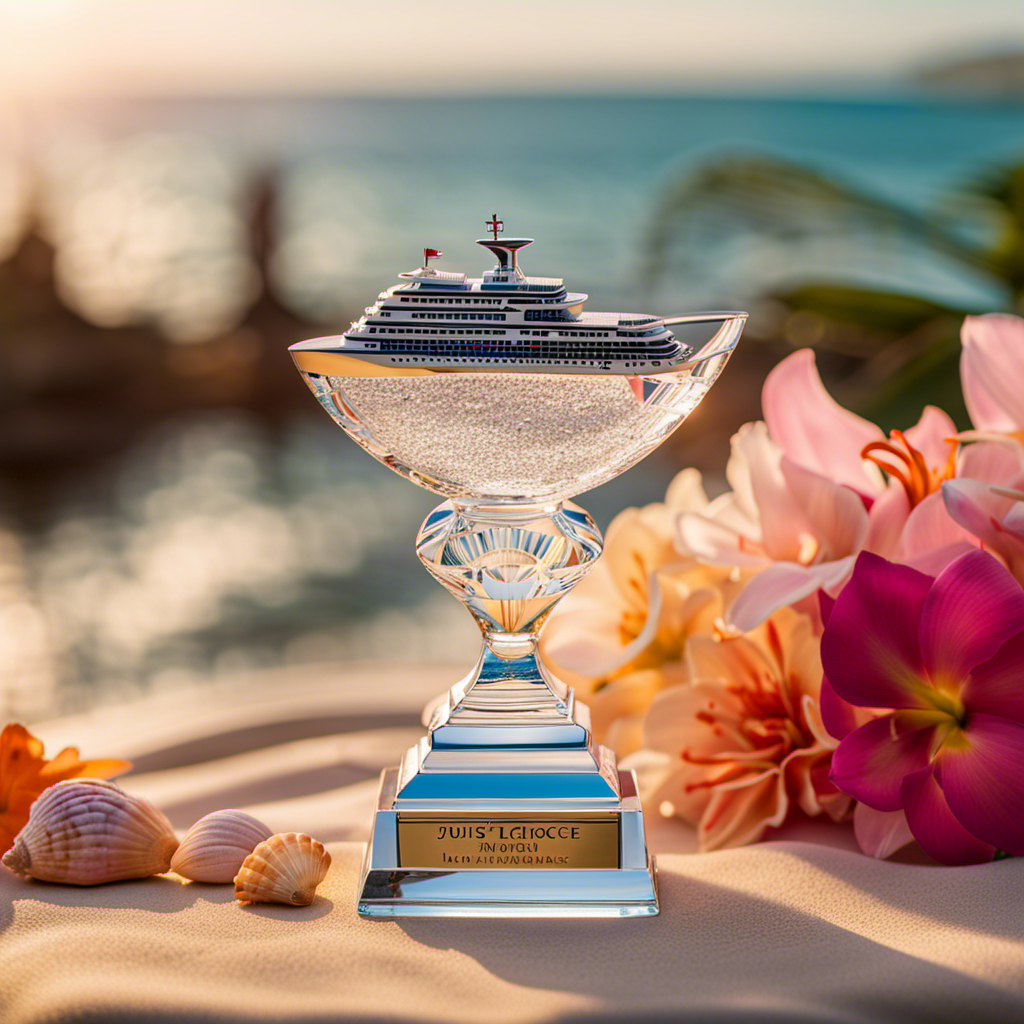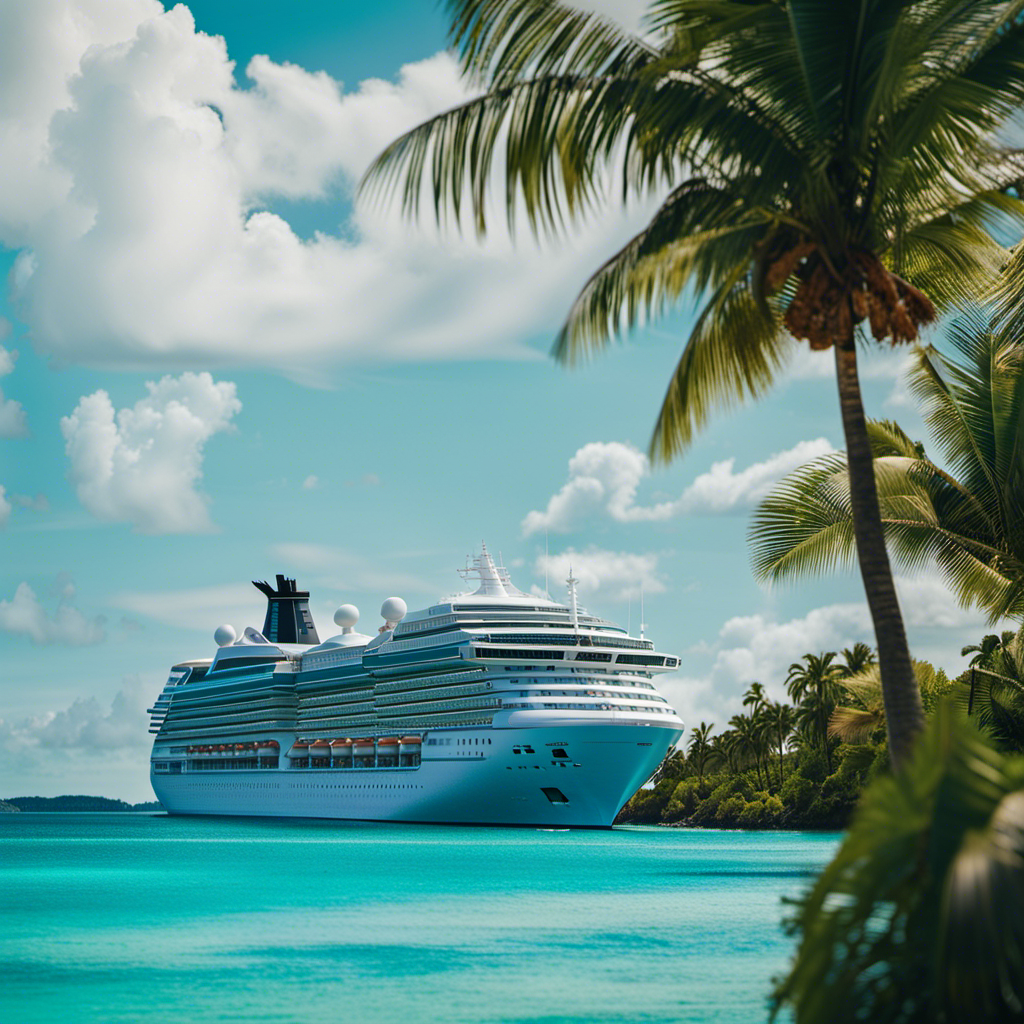As someone looking forward to the resumption of cruise vacations, I am closely monitoring the challenges facing the industry.
The Centers for Disease Control (CDC) has continued to delay the no-sail order for US cruises, causing further frustration. Even after receiving approval, there are doubts about the immediate readiness of ships to sail.
In contrast, Norway has successfully resumed cruising by implementing comprehensive guidelines for safe sailing. However, cruise lines are confronted with hurdles such as implementing safety measures, training crew members, and ensuring adequate supplies.
The future of Norwegian Cruise Line and the industry remains uncertain, but their resilience is crucial for recovery.
Key Takeaways
- The CDC’s continuous postponement of the no-sail order for US cruises has resulted in a delay in the resumption of cruises from US ports.
- Norway has been one of the first places to resume cruising, with the Norwegian Directorate of Health and Norwegian Institute of Public Health releasing comprehensive guidelines for safe cruising.
- Cruise lines face challenges in resuming operations, including implementing safety measures and protocols, training crew members, and ensuring the availability of necessary supplies and equipment.
- The cruise industry has been significantly impacted by the COVID-19 pandemic, experiencing a decline in bookings and revenue, job losses, and financial challenges. To regain passenger trust, strict health and safety protocols have been implemented, and collaboration between cruise lines and health authorities is underway to develop industry-wide safety standards.
CDC’s Continuous No-Sail Order: Implications for Cruising Industry
I’m concerned about the impact of the CDC’s continuous no-sail order on the cruising industry. The delay in the resumption of cruises due to the CDC’s order has had a significant impact on the industry.
Cruise lines have been waiting for several months to resume operations, and the uncertainty surrounding the timeline for resumption has caused financial challenges for the companies involved. The CDC plays a crucial role in determining when Norwegian Cruise Line and other companies can sail again from US ports.
The continuous postponement of the no-sail order has led to skepticism regarding the immediate readiness of ships to sail even after CDC’s approval. This delay has also hindered the industry’s ability to recover from the decline in bookings and revenue caused by the COVID-19 pandemic.
The cruise industry is eagerly awaiting the lifting of the no-sail order to resume operations and regain passenger trust.
Skepticism and Readiness: Challenges in Resuming Cruises
It’s uncertain if the ships will be fully ready to sail immediately after the CDC’s approval. The resumption of cruises is met with public skepticism and concerns about the readiness of the ships. Here are three challenges in resuming cruises:
-
Crew Training: Cruise lines need to train their crew members to adhere to new health and safety guidelines. This includes implementing rigorous sanitation protocols, practicing social distancing, and conducting regular health screenings. The crew plays a crucial role in ensuring the safety and well-being of passengers on board.
-
Public Skepticism: The cruise industry has faced significant scrutiny due to the COVID-19 pandemic. Rebuilding passenger confidence and alleviating public skepticism is a major challenge. Cruise lines must communicate their enhanced safety measures and demonstrate their commitment to passenger health and well-being.
-
Implementation of Safety Measures: Cruise lines need to implement necessary safety measures and protocols on board. This includes enhanced sanitation practices, increased availability of hand sanitizers, and proper ventilation systems. Ensuring the availability of necessary supplies and equipment for these measures is essential.
Overcoming these challenges will be critical for the cruise industry to resume operations successfully and regain passenger trust.
Waiting Game: Months of Delay for Cruise Resumption
After months of waiting, the resumption of cruises from US ports is still uncertain. The delay caused by the Centers for Disease Control’s (CDC) no-sail order has had a significant impact on the cruise industry’s recovery timeline.
The industry was hoping for a prompt resumption of operations, but the continuous postponement of the no-sail order has created uncertainty. Cruise lines are eager to get back to business, but they are also concerned about the readiness of their ships after receiving CDC’s approval.
The delay has not only affected their financial stability but has also raised questions about implementing necessary safety measures and protocols on board. The industry is now faced with the challenge of training crew members to adhere to new health and safety guidelines, ensuring the availability of necessary supplies and equipment for enhanced sanitation, and rebuilding passenger confidence in cruising again.
The CDC’s delay impact has had a significant impact on the cruise industry’s recovery timeline, making it difficult to predict when the industry will fully recover.
Norwegian Cruise Line’s Fate: CDC’s Approval as a Determining Factor
Norwegian Cruise Line’s fate hinges on the Centers for Disease Control’s approval for the resumption of operations. The CDC plays a crucial role in determining when cruise lines can sail again, and their approval is eagerly awaited.
Here’s a closer look at the current situation:
-
CDC’s Role: The CDC has been continuously postponing the no-sail order for US cruises, leading to a delay in resuming operations. Their guidelines and regulations are instrumental in ensuring the safety of passengers and crew.
-
Norwegian Cruise Line’s Readiness: The cruise line has been working diligently to prepare for the eventual restart. They have implemented necessary safety measures and protocols, trained crew members, and secured adequate supplies and equipment for enhanced sanitation.
-
The Wait: Norwegian Cruise Line, like other cruise lines, has been waiting for several months to resume operations. Their readiness and adherence to CDC guidelines will determine when they can set sail again.
As the industry eagerly awaits the CDC’s approval, Norwegian Cruise Line and others continue to navigate the challenges and uncertainties brought about by the COVID-19 pandemic.
Norwegian Directorate of Health’s Comprehensive Guidelines for Safe Cruising
I found the comprehensive guidelines from the Norwegian Directorate of Health to be informative and helpful in ensuring a safe cruising experience. These guidelines, developed in collaboration with health authorities, provide a detailed roadmap for Norwegian cruise lines to follow in order to protect the health and well-being of passengers and crew members.
To give you an idea of what these guidelines entail, here is a table outlining some key measures:
| Guideline | Description |
|---|---|
| Enhanced sanitation protocols | Increased frequency of cleaning and disinfection on board |
| Social distancing | Measures to maintain physical distance between individuals |
| Screening and testing | Pre-boarding health checks and COVID-19 testing |
| Training and education | Crew members trained on new health and safety protocols |
Implementing Health Measures: Challenges Faced by Cruise Lines
By prioritizing the health and well-being of passengers and crew members, cruise lines face the challenge of implementing and enforcing new health measures on board their ships. One of the key challenges is ensuring that all crew members are trained to adhere to the new health and safety guidelines. This includes training them on proper sanitation protocols, social distancing measures, and the use of personal protective equipment.
Cruise lines are investing significant time and resources into providing comprehensive training programs for their crew members to ensure that they are well-prepared to maintain a safe and healthy environment on board.
Another challenge is building passenger confidence in cruising again. Cruise lines are taking proactive steps to communicate their enhanced health and safety measures to potential passengers, highlighting the rigorous protocols in place to protect their well-being. This includes increased sanitization, improved ventilation systems, and pre-cruise health screenings.
Training and Adherence: Ensuring Crew Compliance With Safety Guidelines
Enforcing new health measures on board the ships, crew members must undergo comprehensive training to ensure compliance with the safety guidelines. This training is crucial for the safety of both the crew and the passengers. The crew training includes learning about the proper use of personal protective equipment (PPE), practicing good hygiene and sanitation techniques, and familiarizing themselves with emergency protocols. A three-column, five-row table can be used to illustrate the different aspects of the crew training:
| Training Topic | Description | Importance |
|---|---|---|
| Proper use of PPE | Crew members learn how to correctly wear and dispose of masks, gloves, and other protective gear. | Ensures maximum protection against the spread of infectious diseases. |
| Hygiene and sanitation | Crew members are trained on proper handwashing techniques and cleaning procedures for common areas and cabins. | Reduces the risk of contamination and maintains a clean environment. |
| Emergency protocols | Crew members are taught how to respond to different emergency situations, such as fires, medical emergencies, and evacuation procedures. | Ensures the safety and well-being of passengers and crew in case of emergencies. |
Supplies and Sanitation: Overcoming Challenges in Enhanced Hygiene
When it comes to resuming cruise operations, one of the major challenges faced by cruise lines is ensuring the availability of necessary supplies and equipment for enhanced sanitation.
With the implementation of enhanced hygiene protocols, cruise ships need to have adequate sanitation supplies to maintain a clean and safe environment for passengers and crew. This includes items like disinfectants, hand sanitizers, masks, gloves, and cleaning equipment.
However, sourcing these supplies can be a challenge due to high demand and global shortages caused by the ongoing pandemic. Cruise lines must work closely with suppliers to secure these necessary items and ensure they have enough stock for regular use.
Additionally, they need to establish efficient systems for restocking and replenishing supplies to maintain the highest standards of cleanliness and hygiene onboard.
Rebuilding Trust: Public Perception and Confidence in Cruising Again
I believe it’s crucial for cruise lines to focus on rebuilding public trust and confidence in order to revive the industry. With the impact of the pandemic, the cruise industry has faced significant challenges. These include a decline in bookings and revenue, job losses, and strict health and safety protocols.
To address these challenges, cruise lines must tackle the issue of public perception head-on. Here are three key points to consider:
-
Transparency: Cruise lines should be transparent about their safety measures, protocols, and compliance with health guidelines. This transparency will help rebuild trust and assure passengers of their safety.
-
Communication: Effective communication is vital in rebuilding trust. Cruise lines must proactively communicate their efforts to prioritize passenger health and safety, address concerns, and provide updates on industry-wide initiatives.
-
Collaboration: Working together with health authorities, industry experts, and destinations will not only help develop industry-wide safety standards but also demonstrate a unified commitment to passenger well-being.
Frequently Asked Questions
What Is the Current StatUS of the Cdc’s No-Sail Order for US Cruises?
The CDC’s no-sail order for US cruises is still in place, causing significant impact on the cruise industry. The industry is eagerly awaiting updates from the CDC regarding the resumption of cruises.
How Have the Delays in Resuming Cruises Impacted the Cruise Industry?
The delays in resuming cruises have had a significant impact on the cruise industry. Financial losses have been staggering, with cruise lines struggling to recover. The road to cruise line recovery will be challenging and require innovative solutions.
What Are the Key Guidelines Outlined by the Norwegian Directorate of Health for Safe Cruising?
The Norwegian Directorate of Health has outlined key guidelines for safe cruising. These guidelines focus on implementing safety measures in the cruise industry, ensuring the health and well-being of passengers and crew.
What Challenges Do Cruise Lines Face in Implementing Necessary Safety Measures and Protocols?
Implementing necessary safety measures and protocols presents challenges for cruise lines. Difficulties include training crew members, ensuring supplies and equipment for enhanced sanitation, and building passenger confidence amidst public skepticism.
How Has the COVID-19 Pandemic Affected the Cruise Industry in Terms of Bookings, Revenue, and Job Losses?
The COVID-19 pandemic has had a significant impact on the cruise industry. Job losses, revenue decline, and booking cancellations have been widespread. The industry is implementing strict health protocols to regain passenger trust.
Conclusion
In conclusion, the resumption of cruises from US ports continues to face delays as the CDC postpones the no-sail order. This has had a significant impact on the cruising industry, leading to declined bookings, job losses, and financial challenges.
Norwegian Cruise Line’s fate is closely tied to the CDC’s approval, which remains uncertain. However, the industry has shown resilience and adaptability in implementing strict health and safety protocols.
As the industry navigates these challenges, it is crucial to rebuild public trust and confidence in cruising. Like a ship sailing through stormy waters, the industry must weather the challenges and steer towards a brighter future.










